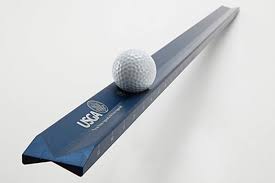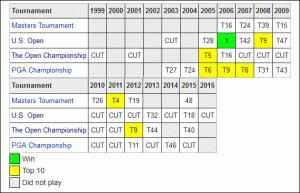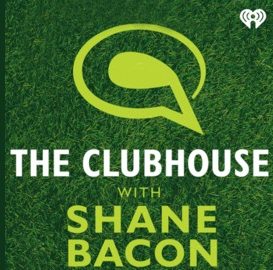 The Golden Age of Golf Architecture left it’s imprint in San Francisco in the 1920’s and one of it’s finest contributions was the California Golf Club. The Cal Club is located at the southern end of the city in the hilly topography at the foot of San Bruno Mountain State Park. From the many high vistas throughout the property you can see the splendor of the city set against the mountain backdrop.
The Golden Age of Golf Architecture left it’s imprint in San Francisco in the 1920’s and one of it’s finest contributions was the California Golf Club. The Cal Club is located at the southern end of the city in the hilly topography at the foot of San Bruno Mountain State Park. From the many high vistas throughout the property you can see the splendor of the city set against the mountain backdrop.
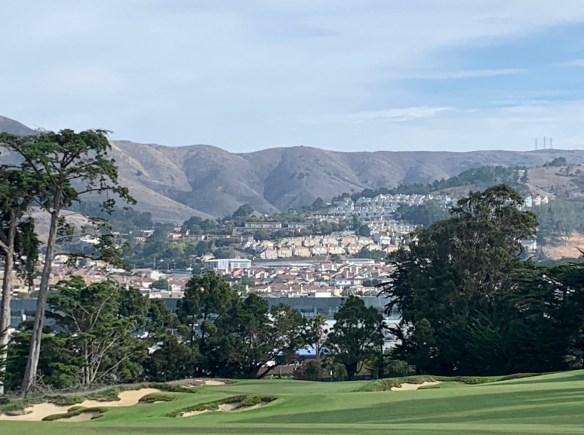
The approach view of the first green juxtaposes the green complex to the near in city and the mountain backdrop behind
As we see on many of these layouts in California the early architects used the movement of the ground coupled with clever routing and imaginative green complexes to present challenging and entertaining golf with virtually no water hazards or forced carries.

Locke routed the wide open Par 4 14th to follow the flow of the land…Macon created the landing areas and the green complex….MacKenzie added elaborate bunkering throughout to define the strategic alternative off the tee and into the green.
The original design was actually the compilation of the work of three distinct architects over a three-year period. Scot Willie Locke, who later designed Lake Merced, was the first to the plate in 1924 and is responsible for the design of the overall routing. Before the construction began they replaced him with an Irishman, A. Vernon Macon, who built the tees, green complexes, and original bunkering.

The 6th is an example of a bold Macon’s green complex design.. With fall offs front, left, and back it is hard to keep a mid-iron approach on the putting surface. Deep face bunkering can punish a timid approach shot.
Macon designed the green complexes with bold contours that caught the attention of the golfing community when it opened in 1926. The fairway bunkering was left for later on purpose, so the architect could analyze from actual play the best positioning based on the divot patterns left by players.
In 1927 the task for creating the fairway bunkering was given out to a third architect, a young Alister MacKenzie, who had recently finished the 9 hole track at the Meadow Club north of San Francisco. MacKenzie redid the 10th and 18th green, all the greenside bunkers, as well as adding the fairway bunkers. His flair for the dramatic took this track to a whole new level in the minds of the golfing public.

This 5th hole would feel right at home at Pine Valley. At 300ish yards a big bopper is tempted to go for the green but the green side bunkers are punishing and can turn a birdie opportunity into a bogie in a heartbeat.
By 1960 the course was in dire need of a attention due to the state’s rerouting of a road adjacent to the property. The club hired the biggest gun of the times, Robert Trent Jones Sr. to do the update. As was his habit when approaching renovation of U.S. Open Course of the era, Jones could not resist putting his entire footprint on the course. He re-routed holes, changed things dramatically and pretty much redefined the character of the Cal Club.
In 2005 the course was suffering from major maintenance issues due to turf disease and inappropriate grasses so they solicited proposals for a complete shutdown and renovation of the course. Kyle Phillips submitted a bold proposal to undo the previous rerouting by relocating the practice area and creating new holes on the front nine and was chosen to do the job. The results supported that choice.

One of the base principles of Phillip’s renovation was to add about 6 inches of sand across the entire layout-this improved the drainage and facilitated the introduction of fescue to replace the rye and poa anna in the fairways and eradicate the poa from the greens. Kyle undid the mess Trent Jones had done to the front nine by introducing three new holes and, at the same time, went back to aerial images of the course to reclaim many of the parameters and features MacKenzie had put in the original work.

This downhill dogleg 3rd was one of Kyle Phillip’s old style new holes that seamlessly fits into the character of this age old design. This original bunkering mimics the detail of MacKenzie’s work.
He made sure that width was king, the rough was not significant reducing the search for balls, and let the strategic MacKenzie bunker positioning steal the show. What emerged was turf that would support hard and fast playing conditions to force the players to respect the topography as a strategic element of play. The presentation of fairway width, no rough to speak of, complimented by generous bunkering in the green complexes puts the premium of positioning on every hole.

On the downhill Par 3 8th begs for a bit of a soft draw…they added a barely visible kicker mound front right that will propel an approach onto the center of the green following the right-to-left movement of the ground
In reading the Hole-By-Hole Analysis below you will see that Phillips gave them a seamless combination of the outward and inward nines that once again emphasized the design thinking of the Golden Age.
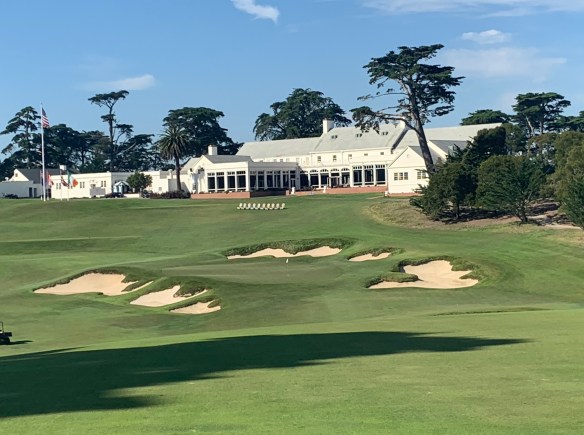
Looking down from the top of the hill at MacKenzie’s 18th green surrounded by sprawling bunkers wedged into the hill under the clubhouse is testimony to their choice of Kyle Phillips to bring this amazing track back to full grandeur.
San Francisco, California
Architect: Willie Lock, A. Vernon Macon, Alister MacKenzie (1927)
Kyle Phillips Restoration (2007)
Par Rating Slope Yardage
Venturi 72 74.6 139 7215
Back 72 72.7 135 6794
Middle 72 70.5 130 6293
Forward 72 66.5 122 5401
(Click here to review the printable California Golf Club hole-by-hole descriptions)






